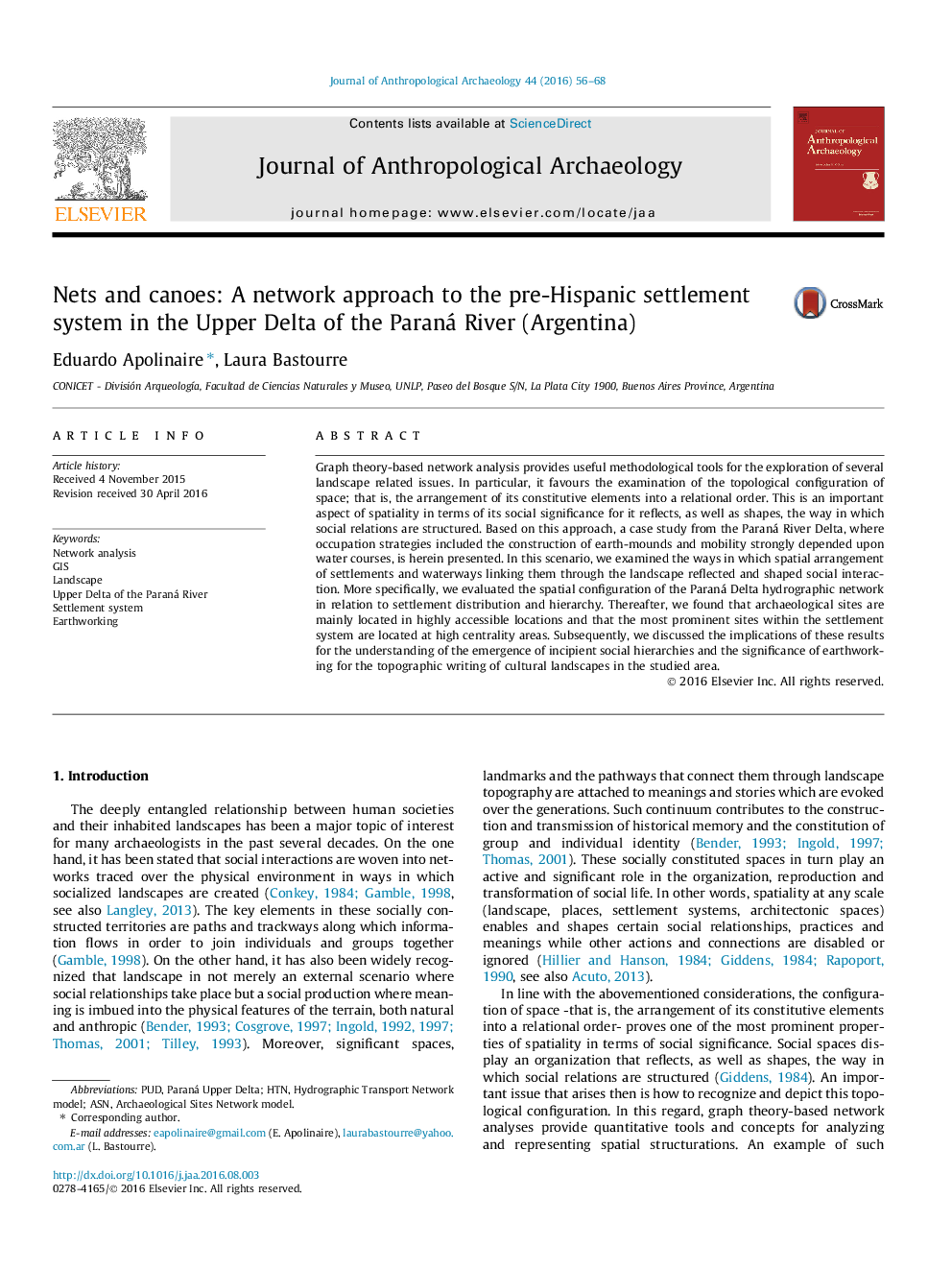| کد مقاله | کد نشریه | سال انتشار | مقاله انگلیسی | نسخه تمام متن |
|---|---|---|---|---|
| 1034842 | 1377869 | 2016 | 13 صفحه PDF | دانلود رایگان |
• Graph theory-based network analysis and GIS tools are used in a landscape perspective.
• Pre-Hispanic settlements were mainly located in highly accessible areas.
• Most prominent earthmounds were built in high centrality areas.
• Spatial arrangement of settlements reflected and shaped social interaction.
• Earthworking as a form of topographic writing imbuing landscape with social knowledge.
Graph theory-based network analysis provides useful methodological tools for the exploration of several landscape related issues. In particular, it favours the examination of the topological configuration of space; that is, the arrangement of its constitutive elements into a relational order. This is an important aspect of spatiality in terms of its social significance for it reflects, as well as shapes, the way in which social relations are structured. Based on this approach, a case study from the Paraná River Delta, where occupation strategies included the construction of earth-mounds and mobility strongly depended upon water courses, is herein presented. In this scenario, we examined the ways in which spatial arrangement of settlements and waterways linking them through the landscape reflected and shaped social interaction. More specifically, we evaluated the spatial configuration of the Paraná Delta hydrographic network in relation to settlement distribution and hierarchy. Thereafter, we found that archaeological sites are mainly located in highly accessible locations and that the most prominent sites within the settlement system are located at high centrality areas. Subsequently, we discussed the implications of these results for the understanding of the emergence of incipient social hierarchies and the significance of earthworking for the topographic writing of cultural landscapes in the studied area.
Journal: Journal of Anthropological Archaeology - Volume 44, Part A, December 2016, Pages 56–68
